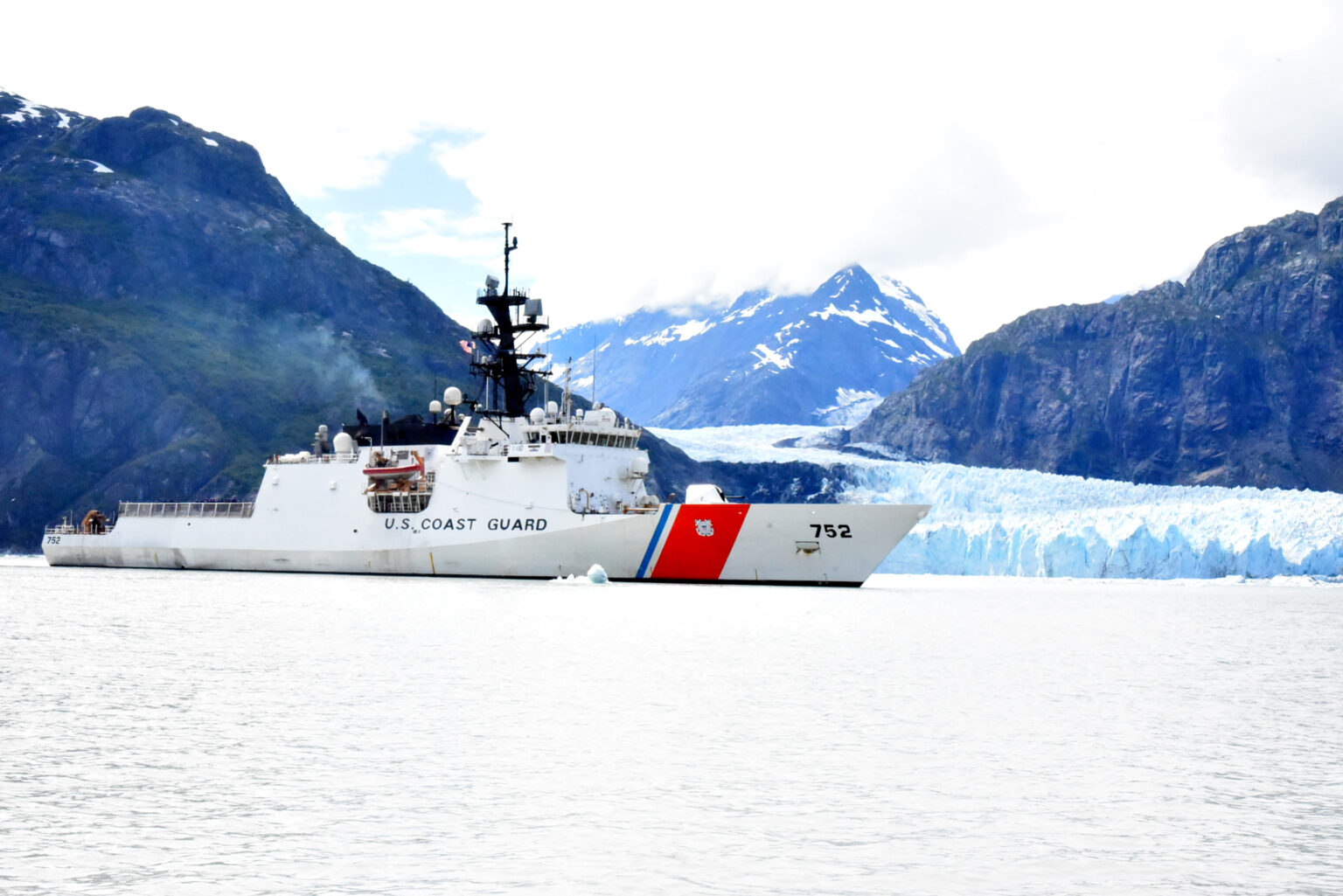The U.S. Coast Guard cutter Stratton returned to port in November 2024 after an eventful 110-day deployment in the Arctic that involved tracking Russian warships, dramatic rescue operations and extensive dialogue with remote Alaskan Indigenous communities. U.S. COAST GUARD
A U.S. Coast Guard (USCG) cutter tracked Russian war vessels, aided two disabled fishing ships in the volatile Bering Sea, and deepened ties with Indigenous communities in a 110-day Arctic deployment. USCG Cutter Stratton returned to its home base in Alameda, California, in early November 2024 from its voyage north of the Arctic Circle having successfully completed its mission of and maintaining the rules-based international order, including sustainable fishing practices.
“I am extremely proud of the resilience and professionalism of Stratton’s crew who’ve spent eight of the last 10 months at sea in Alaska, conducting missions to safeguard our nation and people throughout two deployments to the region,” said Capt. Brian Krautler, the Stratton’s commanding officer, according to a USCG news release. “We met foreign presence in the Arctic, demonstrating our ability and resolve to protect our most challenging border, and we found new ways to extend our presence, devising means to refuel at sea in the high latitudes. We boarded U.S. and foreign vessels to ensure compliance with legal and safety regulations, we enhanced SAR (search and rescue) capabilities through rigorous flight training and conducted important search and rescue cases in our most demanding area of operations.”
The Stratton’s return to its home port marked its second successful 110-day deployment to Alaska in 2024, having previously deployed in January this year. After departing Alameda on July 18, the Stratton sailed throughout the Gulf of Alaska, the Bering Sea and into the Arctic Ocean. “The crew supported U.S. strategic interests in the high latitudes and ensured the safety and compliance of domestic fishery operators,” according to the release. In a significant development, the Stratton conducted the first at-sea refueling for a national security cutter in the high latitudes, which allowed the 127-meter vessel to extend its patrol time and enabled a “persistent Coast Guard presence in the region,” the release stated.
In September 2024, the Stratton’s crew tracked and observed two Russian Navy surface action groups traveling through the U.S. exclusive economic zone (EEZ) above the Arctic Circle while participating in Operation Frontier Sentinel, which was designed to “meet presence with presence when strategic competitors operate in and around U.S. waters.”
The Russian ships — including a Severodvinsk-class submarine, a Dolgorukiy-class submarine, a Steregushchiy-class Frigate, and a Seliva-class tug — were encountered about 92 kilometers northwest of Point Hope, Alaska. The Stratton observed the vessels crossing about 48 kilometers into the U.S. EEZ. The Russian vessels observed international norms, and the Stratton’s crew determined they were trying to avoid sea ice on the Russian side of the maritime border, a Coast Guard news release stated. The incident demonstrates that the Coast Guard’s presence provides assurance that foreign vessels conform with international laws and norms. “We are actively patrolling our maritime border in the Bering Sea, Bering Strait, and Chukchi Sea, with our largest and most capable cutters and aircraft, to protect U.S. sovereign interests, U.S. fish stocks, and to promote international maritime norms,” said Rear Adm. Megan Dean, commander of Coast Guard District 17, in a September 2024 news release. “Coast Guard Cutter Stratton ensured there were no disruptions to U.S. interests.”
Two SAR operations also highlighted the deployment. The Stratton responded to the fishing vessel Galatea, which was adrift in a storm without propulsion due to a severed engine cooling line. The Stratton’s crew boarded the vessel and repaired it enough to be safely escorted to Dutch Harbor, Alaska. The Stratton also evacuated the crew of the cargo tanker Pan Viva in a storm north of Dutch Harbor. The vessel was in danger of running aground in high seas and 90 mph (145 km/h) winds when Coast Guard MH-60 helicopter air crews evacuated nonessential crew members with oversight provided by Stratton.
An equally important part of Stratton’s mission involved strengthening ties with Alaska’s Indigenous communities in remote areas. Crew members engaged with the Alaskan communities of Savoonga, Teller and Brevig Mission, meeting with tribal and city council leadership, volunteering at elementary schools, providing training in water and boating safety,and participating in communitywide events including a high-latitude half-marathon. These activities deepened ties between the U.S. military and those communities as crew members learned about Inupiat culture.

